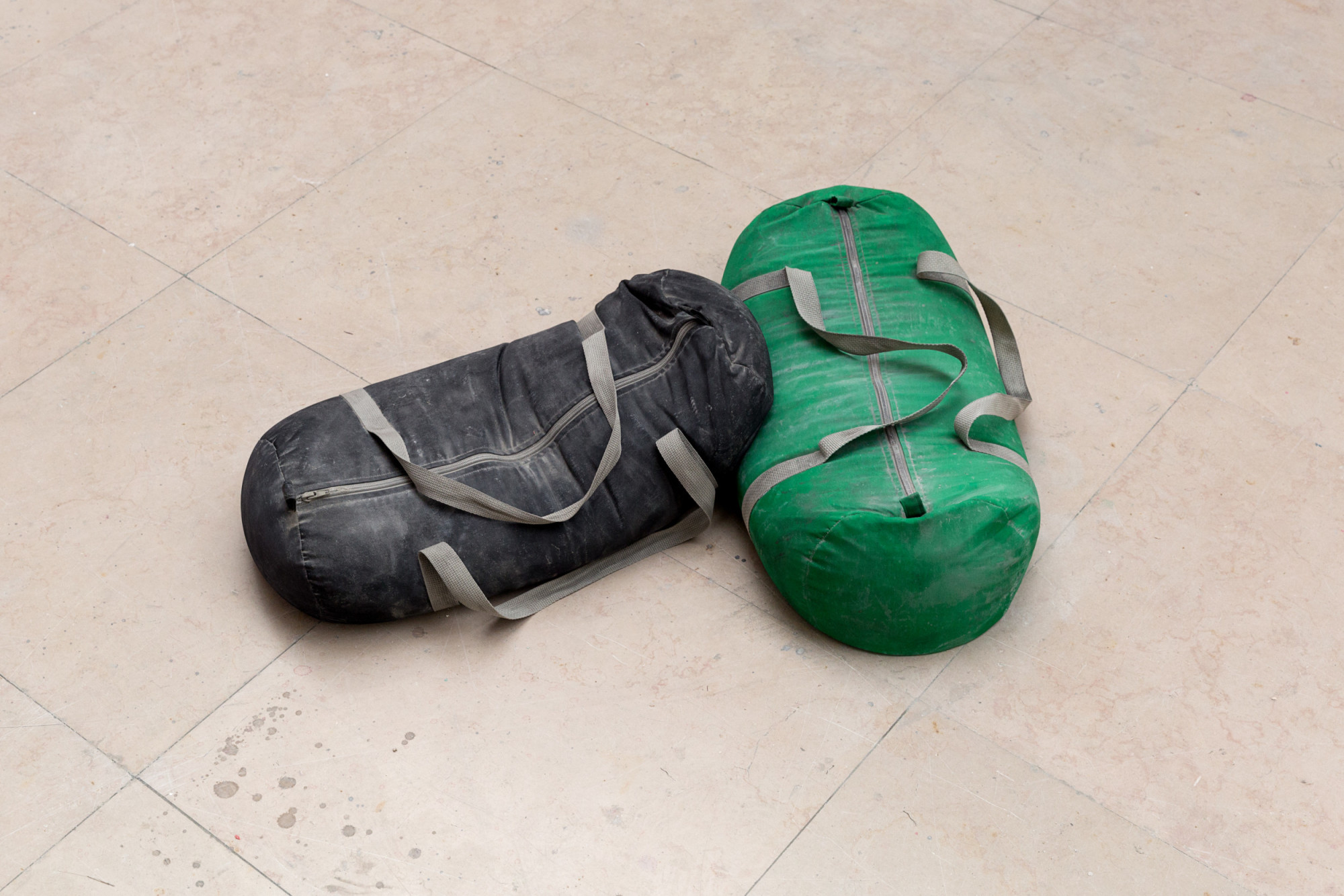
Elisa Rigoulet in conversation with
LOUP SARION
U sleeping on me
2015
gym bag, cement
Your sculptures are primarily surfaces. Vertical, prone or suspended, they define themselves just as they slip away, they stand up just as they sink in or lie down, always wavering between usage and afunctional aesthetics…
My sculptures often play on the dissonance between fairly well-defined elements, between orthogonal organization and soft shapes that seem to be letting go. As though they were resting after an effort, after love. You feel you’re just at the edge of being able to grasp, define or embrace these shapes, but there’s a kind of water leak grafted onto them. Their surface is like skin. I try to establish a type of human interaction between the pieces, and by treating their surface, I give them a look.
The first thing I test in a new material is its absorption capacity. Whether other elements, especially liquids, can penetrate its surface, its envelope. I want to know to which extent they will interpenetrate physically. Often, surfaces sweat out the excess material used to make them (like the cement laitance in U sleeping on me).
So you find something sensual in architectural modules, in urban, public or interior furniture?
When I’m walking around in the urban world, whether sophisticated or derelict, I’m very open to its sensuous potential. I like to think that a public bench was put there so you could kiss your girlfriend or a jardinière to put out your cigarette butt, and that a window is first and foremost a reflective surface made to fix your hair… This idea must partly come from movies and TV series that turn the city into the backdrop of the most beautiful love stories. So furniture is a starting point but not at all an end. If I make a bed, I want to know if it’s comfortable. But by making it, above all I want to tell the story of sleep as the locus of every possibility. When you see that bed, you already know it’s full of fantasies.
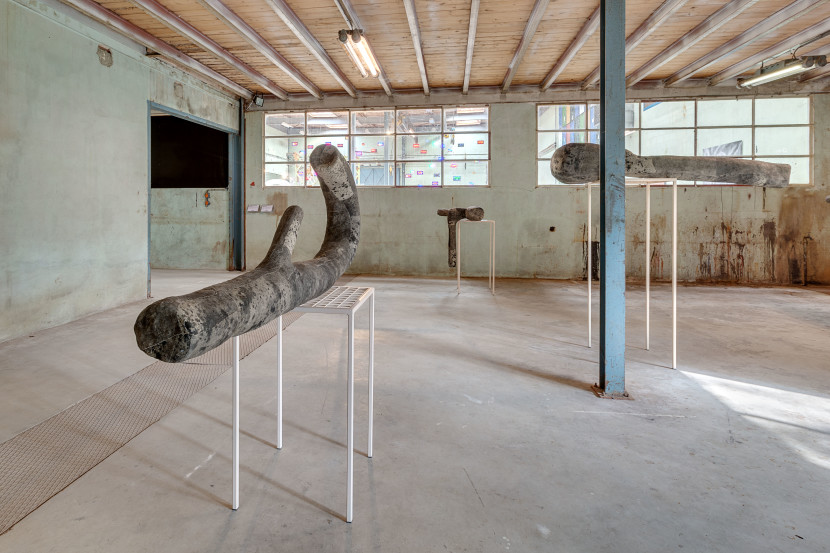
the superstitious, 2016
installation view of Le Nouveau Monde Industriel, Galleria Continua, Les moulins
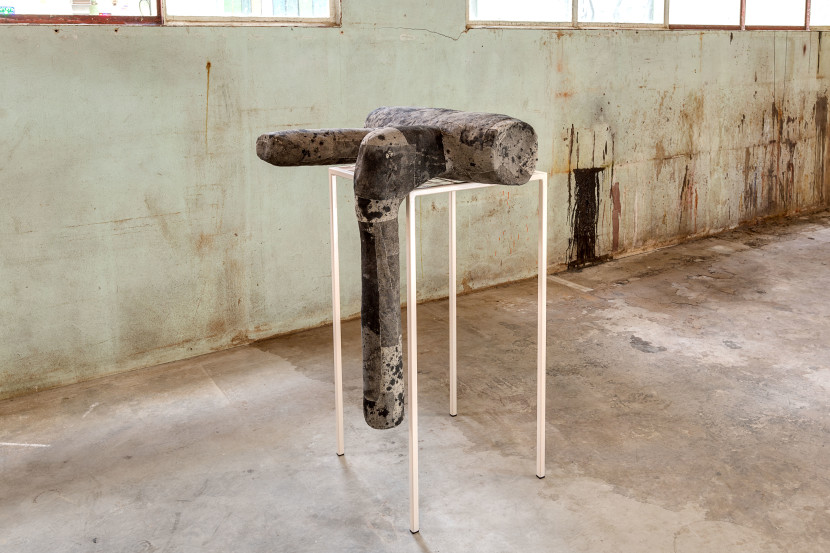
the superstitious, 2016
installation view of Le Nouveau Monde Industriel, Galleria Continua, Les moulins
You’re speaking about the public, normal, common, transitory space. Is there something that first attracts you in its visual ordinariness?
I often act through transfers, like a copy/cut/paste/shift. The objects I borrow lose their function to acquire a new essence. They’re reproduced with errors, weather-beaten, and it is this degradation that gives them a new potential for life, so that they can conjure narratives. It’s really inspiring to tease out meaning from objects that have very little of it. I quite like nonchalant forms, forms that have let themselves go, like an old, worn out leather couch or a drooping sports bag. The anthropomorphism contained by these objects is fairly simple and straightforward. But for me, it’s sufficient.
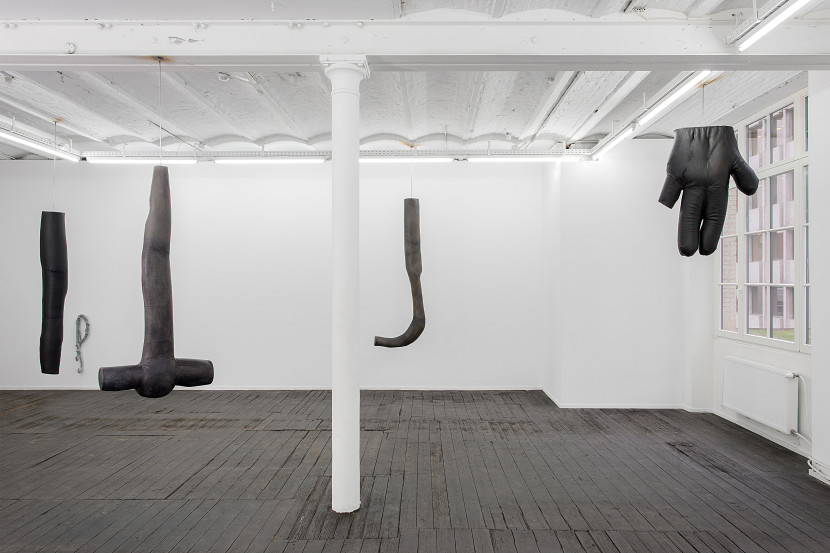
the sleepwalkers, 2016
installation view of Humidity, galerie JeanRochDard, Brussels
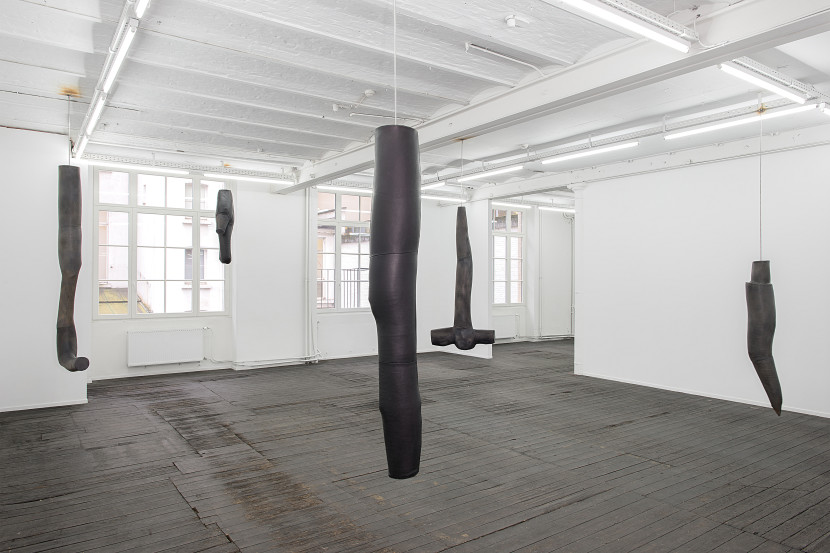
the sleepwalkers, 2016
installation view of Humidity, galerie JeanRochDard, Brussels
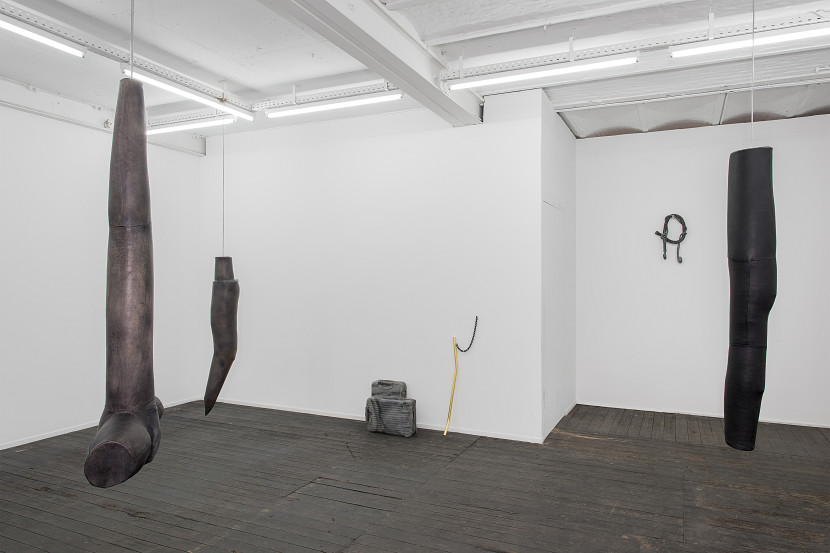
installation view of Humidity, galerie JeanRochDard, Brussels
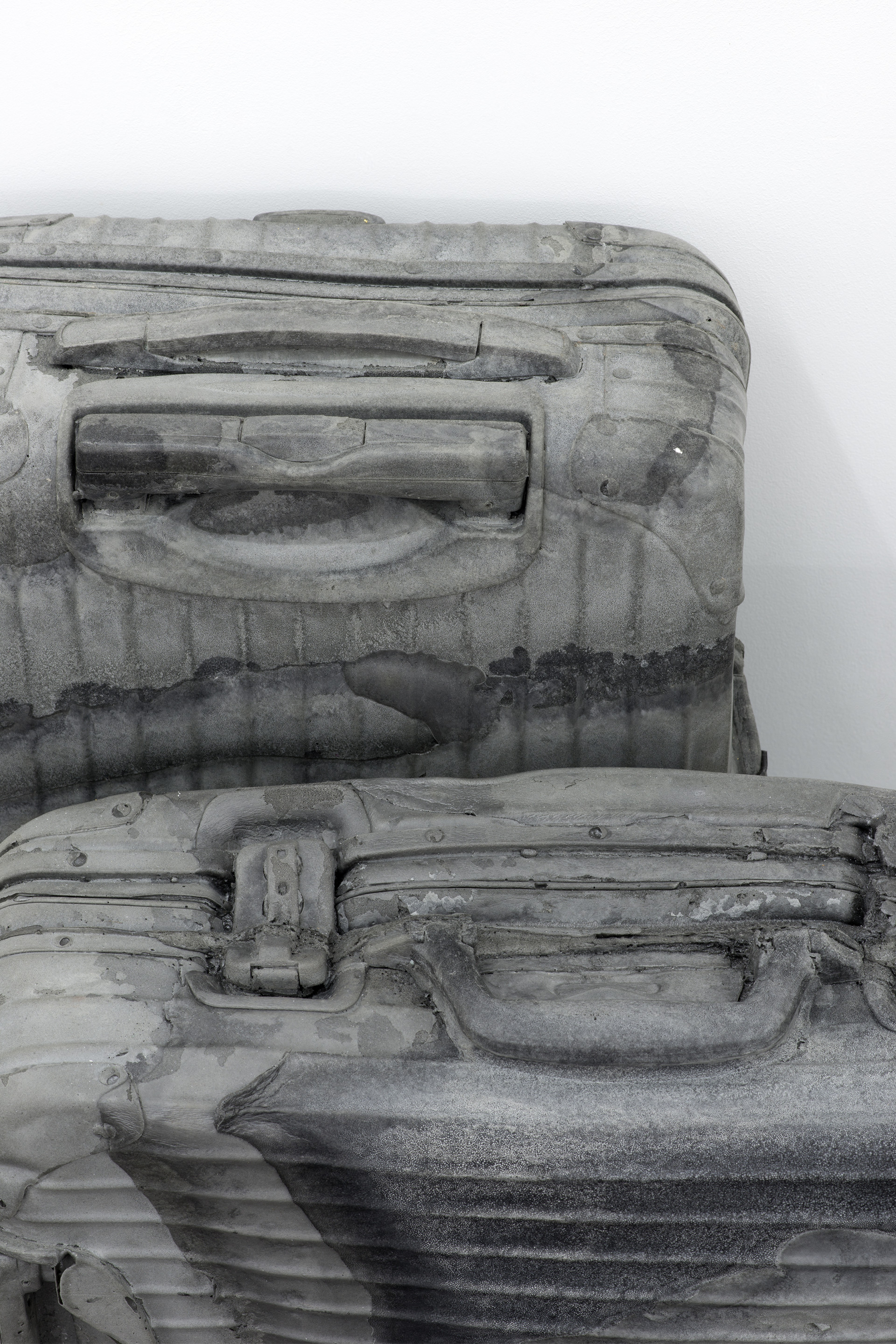
soft sweating ( U smell like I smell ), 2015
urethane memory foam
Yet in your work, these shapes become somewhat precious because of the materials you use. Is this an important contradiction for you?
These objects seem fragile because they’ve lived. And if I give them a precarious, unstable aspect, it’s certainly to make us pay more attention to them. I like the idea of freezing unstable elements, of turning something that’s rather volatile into a heavy, quasi-prehistoric mass, as I’ve done recently with a set of leather seats, worn out, shiny, waxy and filled with concrete, frozen, hard as marble (Do not lie to me, 2016).
Sometimes I’m not aware of the attitude of my objects… They evolve in the studio, empirically, one gesture is added to another, an image gets grafted onto porous material, then partially disappears. My sculptures also evolve with the seasons, the weather transforms them, like a skin disease. Direct sunlight makes it go away faster is the advice of friend gave me to treat my Pityriasis rosea Gibert… I hope my sculptures will always be the memento of a state of being that I share with the people who are close to me.
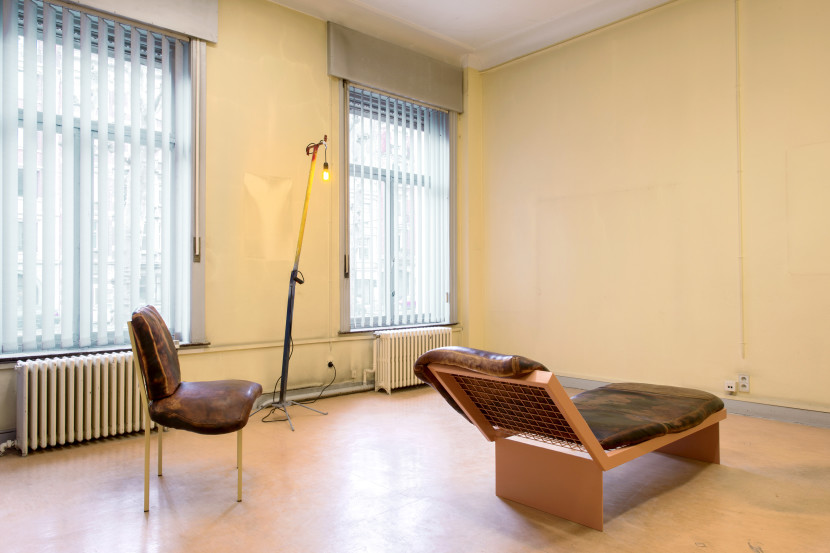
installation view of Not really really, Fréderic de Goldschmidt Collection , Brussels, 2016
(lamp by Manfred Pernice)
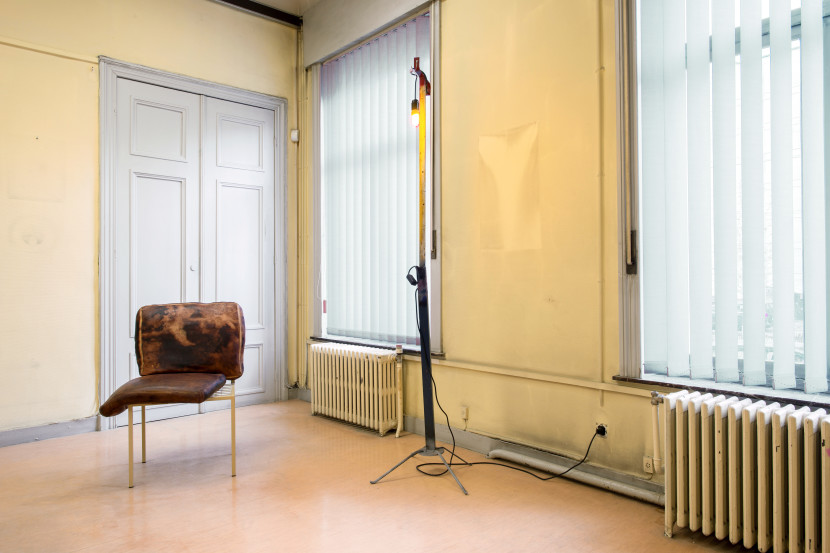
installation view of Not really really, Fréderic de Goldschmidt Collection , Brussels, 2016
(lamp by Manfred Pernice)
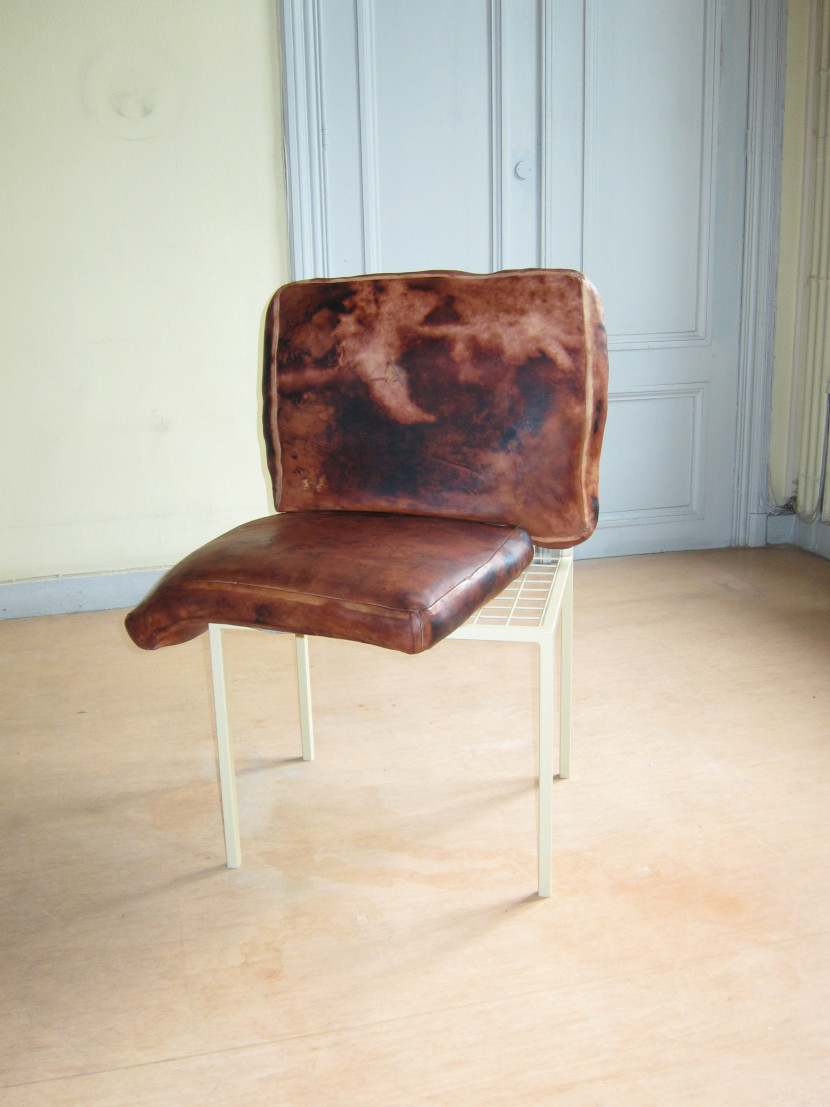
Do not lie to me
2016
leather, cement, dye, polish, coated steel
On that matter, your objects seem to integrate touch, or even taste within their production process… You feel like putting your hands on them, like testing them…
Yes, they have a kind of haptic attraction. I mostly try to foster connections, first between stories and sculptures, then between sculptures and public space. I don’t master these connections very well, even though I’m sure I produce clues about them. I like to think that a sculpture, however abstract it is, could become a bench, a shelter, a table or a window… If one of my sculptures leads people to think they could live with it, live with its absolute lack of functionality, then I think the dialogue between this artwork and the person who approaches it is fully engaged. I’ve always loved that feeling of frustration that keeps us from touching objects in a museum. In this sense, a private collection is a domestic utopia, with artworks that you can caress.
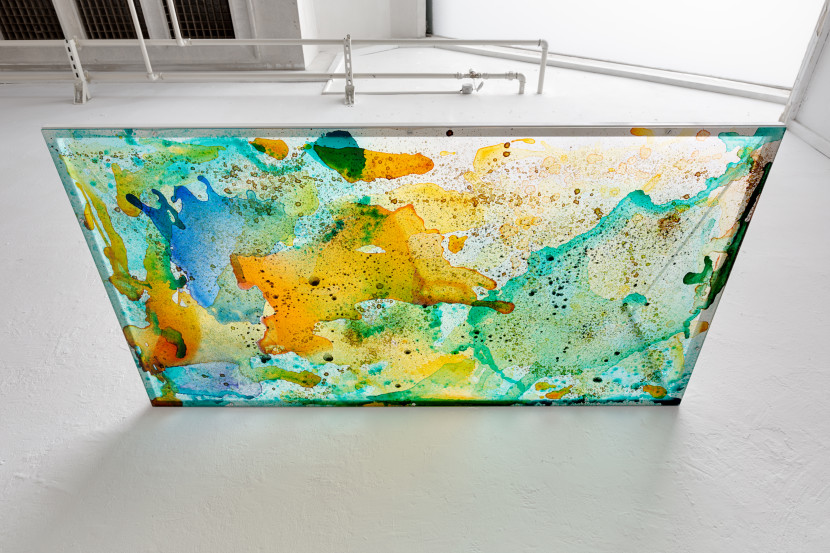
Direct sunlight makes it go away faster
2015
plexiglass, dye, ink, coated steel frame
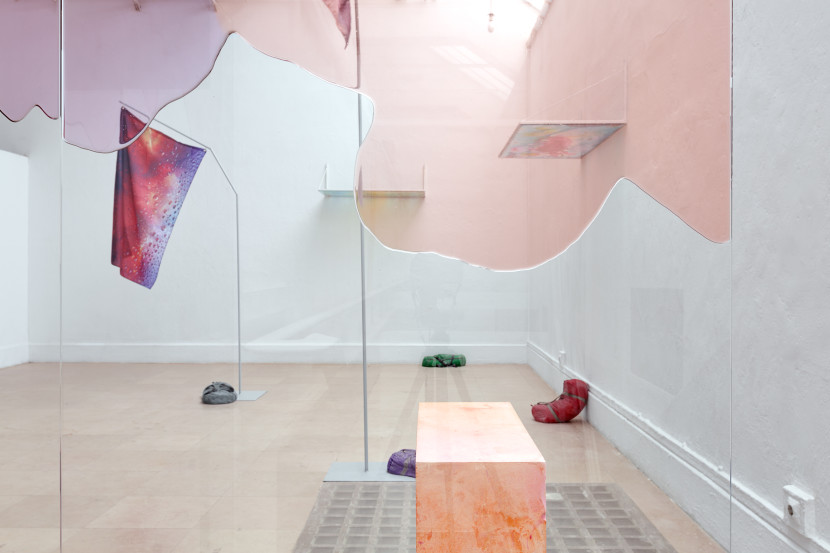
installation view, ensba, Paris, 2015
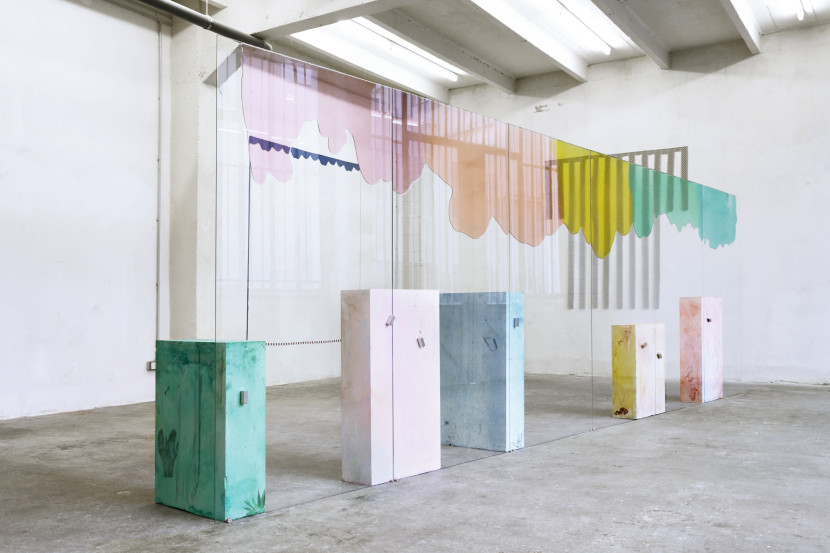
You’re assimilating weird
2015
epoxy resin on glass panels, plaster, ink, dye, magnet, xerotransfer
installation view of I cut out the mug and went to the bottle, EXOEXO, Paris (duo with Strauss Bourque Lafrance)
Interview by Elisa Rigoulet
Curator at EXOEXO, Paris
www.loupsarion.com
OFluxo © 2016
